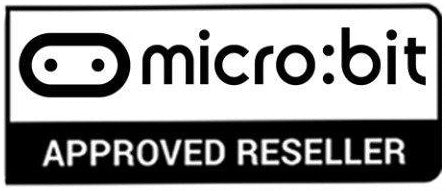Good quality and prompt delivery
NOVEL 12V 1Amp Industrial Grade SMPS Power Adapter

BBC Micro:Bit V2.2 Go Kit
Couldn't load pickup availability
If you are looking to start programming or would like an exciting device to get young people interested in coding – then the BBC micro:bit V2.2 is perfect for you! The micro:bit Go box contains the micro:bit computer as well as a USB cable to connect to a PC and a AAA battery holder with AAA batteries so you can start creating straight away.
Created by the BBC working in partnership with other brands, the micro:bit is a small, programmable computer that has been designed to inspire children and young people to learn about programming and electronics in a practical and fun way.
This single-board computer has an impressive ARM Cortex m4 processor and 512KB of flash, making it a capable little device. The micro:bit comes in 4 colours and has various individually programmable inputs and outputs including a 5×5 LED matrix display, buttons, speakers and a microphone. The micro:bit also features a temperature sensor, accelerometer, touch-sensitive logo, and a built-in sleep/off mode.
It is compatible with lots of free online code editors designed for different knowledge levels across a number of different programming languages so you can find something to suit how you want to learn or teach. There are endless amounts of free projects, lesson plans and activities to try, so there is every reason to start your micro:bit journey today.
| Brand | BBC Micro:Bit |
| Model | Micro:Bit V2.2 |
| Processor | Nordic Semiconductor nRF52833 processor |
| Core Variant | Arm Cortex-M4 32bit processor with FPU |
| Flash Memory | 512KB Flash |
| RAM | 128KB RAM |
| Pins | 25 |
| Speed | 64MHz |
| Dimensions(LXB) | 40 x 50mm |
| Weight | 120 grams |
The BBC micro:bit is a tiny computer made by the BBC. It's much smaller and faster than the old BBC Micro from the 1980s. Even though it's small, it's packed with features like LED display, buttons, sensors, and ways to connect like radio and Bluetooth. Some versions even have a microphone and speaker so you can hear and make sounds.
It helps kids grasp coding, programming, inputs, and outputs. Through projects like creating digital watches, step counters, robot controllers, games, dice, breathing patterns, night lights, music players, timers, temperature sensors, and more, children can engage in hands-on learning about computer science and STEM topics.
Yes, a lot of people think the BBC micro:bit is great for teaching beginners, especially kids, about programming and electronics. It has a bunch of cool stuff you can use, and there are lots of free things online to help you learn and write code for it.
The BBC Micro:Bit V2.2 has 128KB of RAM.
The BBC Micro:Bit can be programmed using different languages like JavaScript, Python, and Microsoft MakeCode blocks. This makes it flexible and good for people at different learning levels and with different preferences.
Yes, the Micro:Bit is easy to use. It offers a simple interface, beginner-friendly coding options like Microsoft MakeCode blocks and Python, and plenty of educational resources for support.
The micro:bit is amazing for kids and fits perfectly into STEM lessons and after-school clubs. It's versatile, so you can teach coding, game design, and other cool stuff with it. You can use it on its own or with other things like Scratch or Arduino kits. It's also useful for science and math lessons.
This product comes with a 1-year manufacturer warranty from the date of purchase, covering manufacturing defects only.
The product shows signs of physical damage, mishandling, exposure to water/moisture, fire, natural calamities, unauthorized repairs, improper storage near heat or direct sunlight, or alteration in any way.